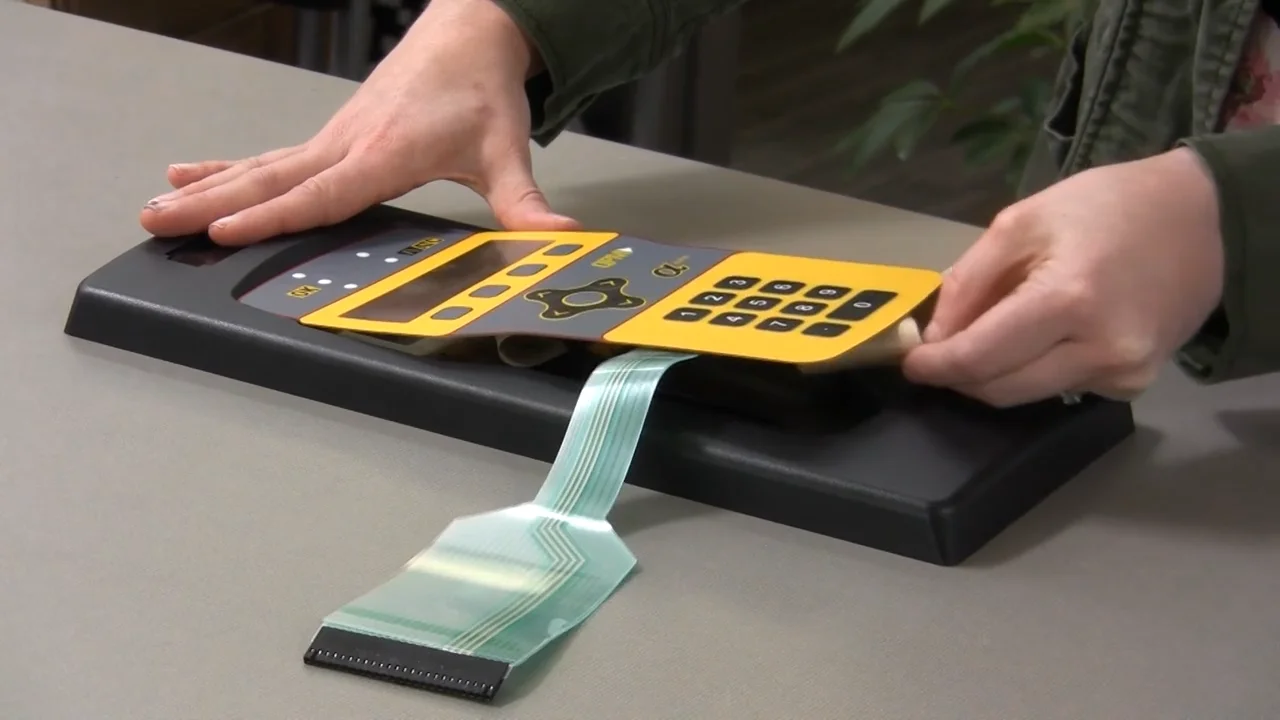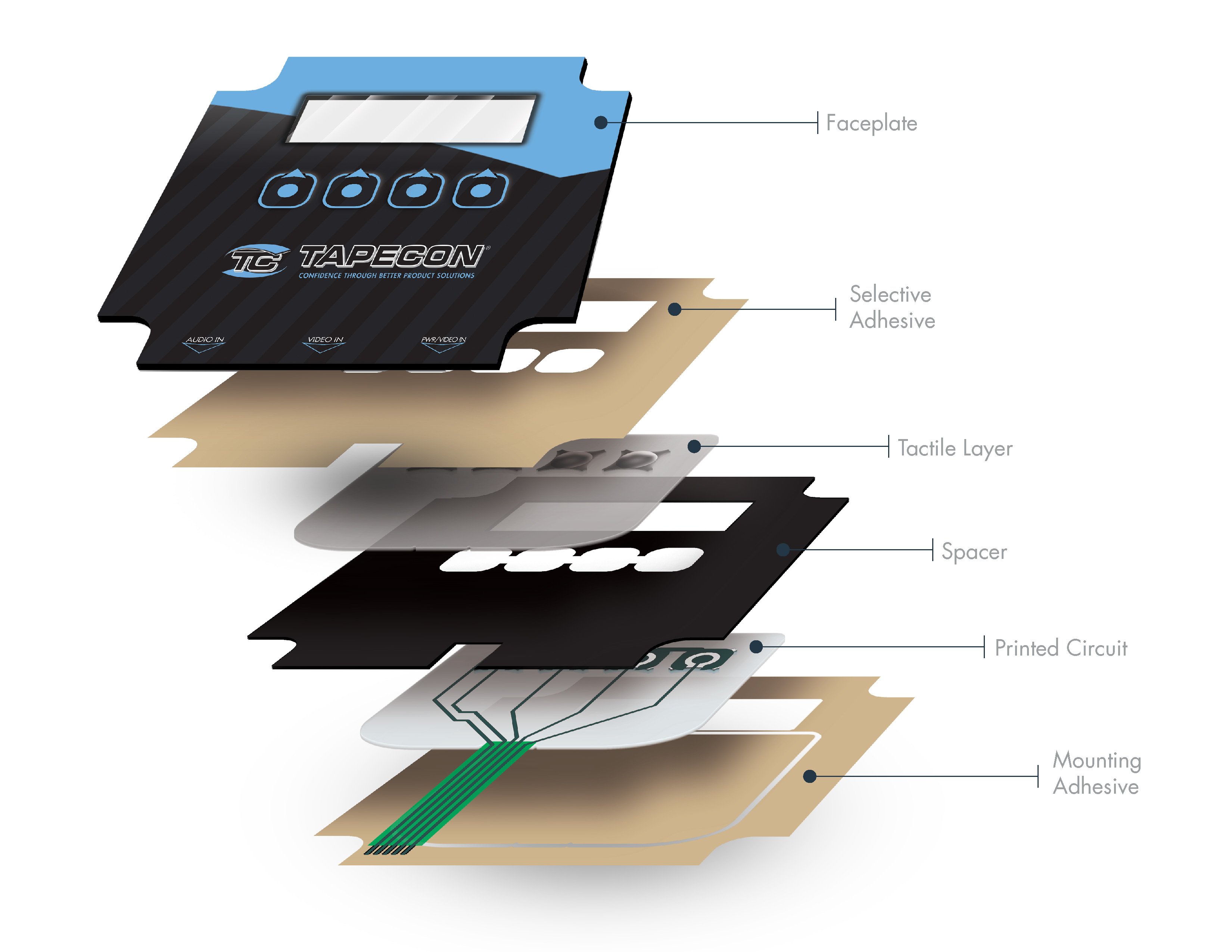The Role of a Membrane Switch in Modern Touch Interfaces and Controls
The Role of a Membrane Switch in Modern Touch Interfaces and Controls
Blog Article
Exactly How Membrane Switches Over Contribute to the Resilience of Electronic Control Panels
Membrane layer switches play an important function in boosting the durability of digital control panels, largely via their multi-layered construction which offers effective protection against environmental variables such as wetness and dust. The absence of relocating parts substantially reduces the probability of mechanical failings, making membrane switches ideal for demanding applications.
Meaning of Membrane Buttons

Membrane buttons are designed to be slim and lightweight, making them suitable for applications where area is limited. They can be manufactured in different shapes, sizes, and shades, offering versatility in style that meets visual and useful requirements. Furthermore, membrane layer switches can integrate numerous modern technologies, such as responsive responses and LED indications, enhancing individual experience.
Due to their building and construction, membrane layer switches are frequently resistant to dust, dampness, and basic wear, adding to their sturdiness in requiring atmospheres. Their smooth design not only assists in easy cleansing but also reduces the risk of mechanical failing, making them a recommended option for manufacturers seeking trustworthy interface in their electronic control board.
Protection Against Environmental Factors
The style of membrane changes inherently supplies a level of protection against numerous ecological variables, which is vital for keeping capability in difficult conditions - Membrane Switch. These switches are commonly built with layers of versatile materials that secure inner elements from dampness, dust, and contaminants. By enveloping the wiring, membrane layer switches over decrease the risk of short circuits and corrosion, which can dramatically harm efficiency
Moreover, the use of robust adhesives and sealants during production improves their resistance to environmental challenges. Membrane buttons can withstand direct exposure to chemicals and solvents, making them ideal for markets such as food handling and health care, where hygiene and cleanliness are critical. Their seamless surface area design additionally stops the buildup of dirt and microorganisms, facilitating easier cleaning and upkeep.
Temperature fluctuations are an additional ecological issue, and membrane layer buttons are crafted to work effectively across a broad variety of temperatures (Membrane Switch). This flexibility ensures that control board continue to be operational in different setups, from industrial settings to consumer electronics
Influence On Customer Interaction
User interaction with digital control panels is dramatically influenced by the layout and performance of membrane buttons. These buttons provide a responsive user interface that enhances the overall user experience, allowing for user-friendly navigation and control. Their responsive nature makes sure that users receive instant responses upon activation, which is critical for jobs needing accuracy and effectiveness.
In addition, the smooth surface area of membrane changes assists in very easy cleaning and upkeep, advertising user self-confidence in the integrity of the user interface. This sanitation is specifically essential in environments where health is vital, such as medical or food processing settings. Additionally, the compact and light-weight layout of membrane layer changes adds to the aesthetic allure of control board, encouraging user engagement via a contemporary and streamlined look.
In addition, the combination of visual aspects, such as published icons and backlighting, assists users quickly determine functions, decreasing the learning curve connected with new equipment. Because of this, users can operate devices extra effectively, bring about enhanced efficiency and contentment. In summary, membrane switches play an essential duty in improving user communication by integrating functionality, looks, and ease of usage, eventually causing improved operational performance.
Layout Adaptability and Personalization
Style flexibility and personalization are important aspects of membrane layer buttons, allowing producers to tailor electronic control board to details applications and user needs. This flexibility allows for the assimilation of different style elements, such as colors, graphics, and appearances, which can improve the aesthetic charm and user involvement of the control board.
Membrane switches can be tailored in shapes and size, fitting a broad array of gadgets and applications, from commercial machinery to customer electronic devices. This convenience guarantees that suppliers can create user-friendly user interfaces that straighten with customer expectations from this source and functional requirements. Additionally, the ability to include special features such as backlighting or tactile feedback even more improves functionality, allowing for a more interactive experience.
Furthermore, the production process for membrane changes supports the rapid prototyping of designs, making it possible for manufacturers to iterate and improve their ideas quickly. This this article ability not just increases the advancement timeline but additionally guarantees that the final item meets certain useful and aesthetic standards.

Cost-Effectiveness and Long Life
Cost-effectiveness and durability are considerable benefits of membrane layer buttons, making them an eye-catching choice for suppliers and end-users alike. These buttons are usually more economical to create than traditional mechanical switches, mostly due to their simplified production processes and the lowered number of parts required. This cost benefit expands not just to preliminary production however likewise to lasting functional expenditures, as membrane switches frequently require much less upkeep and have a reduced failing rate.
Moreover, the durability of membrane switches over adds to their general value. Constructed from durable products, they are resistant to environmental variables such as dampness, dirt, and chemicals, which can cause early wear in other button kinds. The lack of moving parts reduces mechanical failing, permitting membrane changes to keep performance over prolonged periods.
This longevity is especially helpful in applications requiring consistent efficiency under demanding problems, such as clinical devices and commercial tools. Inevitably, the mix of cost-effectiveness and longevity makes membrane switches over a financially feasible selection for manufacturers, supplying dependable remedies that hold up against the test of time while enhancing budgetary factors to consider.
Conclusion
In conclusion, membrane layer buttons substantially improve original site the resilience of electronic control panels through their robust construction and safety attributes - Membrane Switch. Generally, membrane layer changes represent a trustworthy and economical choice for enhancing the long life and performance of digital control systems.
Report this page